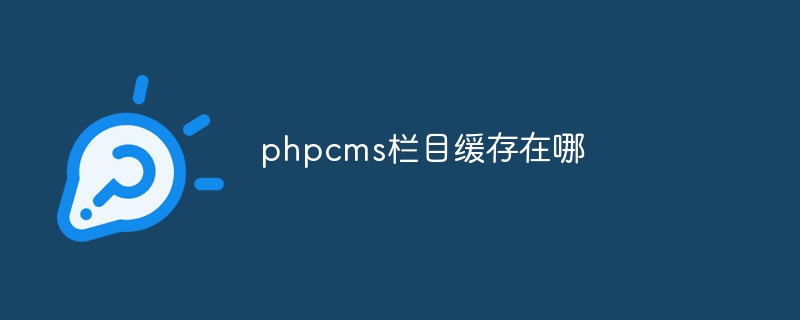Home >Common Problem >Where is the phpcms column cache?
Where is the phpcms column cache?
- 尊渡假赌尊渡假赌尊渡假赌Original
- 2023-06-13 15:48:241491browse
phpcms column cache is stored in the "caches/caches_pe" directory of the server by default. The file name starts with "category_", followed by the ID of each column, such as `category_1.cache.php `, you can then view these cache files by connecting to the server and browsing to the caches directory under the phpcms installation directory, and then using the terminal command `ls` or FTP client.

The operating system of this tutorial: Windows 10 system, phpcms v9 version, Dell G3 computer.
phpcms column cache is stored in the `caches/caches_pe` directory of the server by default, where the file name starts with `category_`, followed by the ID of each column, for example `category_1.cache.php`.
In order to view these cache files, please connect to your server and browse to the caches directory under the phpcms installation directory. You can view these cache files using the terminal command `ls` or an FTP client. Here you can find all files named "category_*.cache.php". The asterisks will be replaced with the IDs of each column.
The following is a code example to view the category column cache, which shows how to obtain the path and content of the cache file:
$category_id = 1; // 请替换为您要查找的类别ID
$cached_file_path = PHPCMS_PATH . 'caches/caches_pe/category_' . $category_id . '.cache.php';
if (file_exists($cached_file_path)) {
$cached_content = file_get_contents($cached_file_path);
echo "缓存文件路径:$cached_file_path<br />";
echo "缓存内容:<pre class="brush:php;toolbar:false">" . htmlspecialchars($cached_content) . "";
} else {
echo "没有找到缓存文件: $cached_file_path";
}Please note that in the above code, we use the variable `$category_id ` to specify cache files to search. You can replace it with the ID of another category to see the cache for that category.
The above is the detailed content of Where is the phpcms column cache?. For more information, please follow other related articles on the PHP Chinese website!

